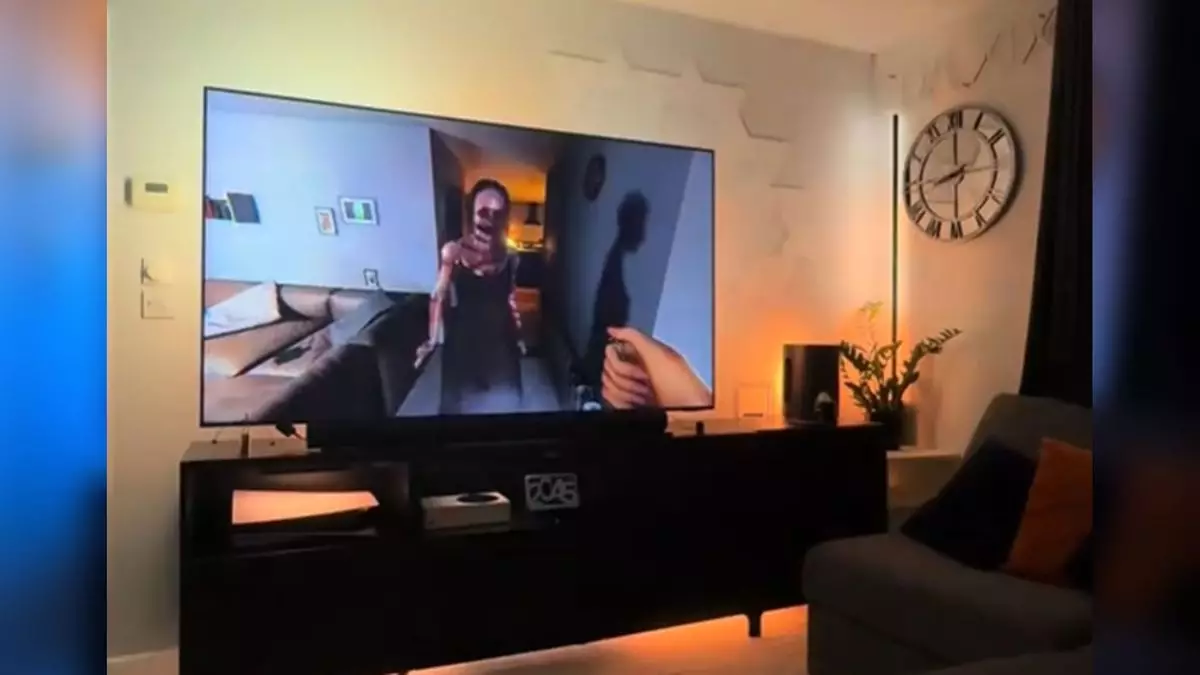In the ever-evolving world of video games, immersion has taken on a new meaning. From the days of simple 8-bit graphics to the sprawling open worlds of today, the gaming experience now extends beyond just visuals and gameplay. Gamers are increasingly surrounded by advanced technologies, including virtual reality headsets, haptic feedback devices, and ambient lighting systems, all designed to enhance the overall experience. This transition into an immersive gaming arena often leaves players both thrilled and unnerved, especially when the gameplay involves psychological horrors that shake them to their core.
Enter TikTok user Idaxix, proudly dubbing themselves “The LED Light Guy.” Idaxix has ingeniously rigged their gaming environment using a plethora of lights and smart bulbs that synchronize with the on-screen action. In particular, they have taken this immersive experience to the next level by linking it with the spine-chilling horror game *Phasmophobia*. This game capitalizes on fear with its ghostly encounters that ignite adrenaline, and by introducing responsive lighting that flashes to signal a ghost’s imminent presence, it’s no wonder that the combination can be utterly terrifying.
Idaxix’s setup illustrates just how far gamers are willing to go to curate their own experiences. What starts as an intriguing endeavor can quickly morph into something that unravels a deep-rooted fear of the supernatural. The ambiance created by flashing lights, combined with the game’s eerie sound design and visuals, can lead one to feel as though nightmares are manifested in their living room. Would you dare to face the brilliance of immersive technology when it collides with existential terror?
While some may revel in this heightened state of engagement, not everyone shares that sentiment. For those who have a penchant for horror but possess a tendency to jump at shadows, like many others, the experience can feel overwhelming. The author expresses a relatable fear, suggesting that combined with the psychological dread of *Phasmophobia*, the experience would be too much to handle. This highlights an important aspect of gaming: immersion is a double-edged sword. For some, it’s exhilarating; for others, it’s a one-way ticket to the kitchen to avoid the terror unfolding on screen.
This sentiment draws attention to the significant emotional and psychological considerations that arise from engaging with intensely immersive technology, particularly when it involves horror themes. The environment users create can either enhance a sense of security or plunge them into frightful uncertainty.
Amidst the spectrum of horror-laden immersions, it’s worth noting that not all gaming experiences need to induce heart-pounding fear. Idaxix also shares light-hearted gaming clips featuring vibrant, colorful experiences such as *Mario Kart*. These light shows prove that the world of augmented gaming is not solely dedicated to horror. By offering a visual palate cleanser, this exploration into brightness and color serves as a reminder that immersive technology can be employed in various inventive ways to evoke feelings just as powerful, yet delightfully different.
Moreover, the exploration of hardware—which includes devices like haptic feedback systems or vibrating gaming chairs—opens a new frontier. The Razer Project Arielle, for instance, combines cooling technology with gaming, hinting at a future where gamers might experience shifts in environmental sensations that add layers to the gameplay itself. One could imagine a cool breeze signaling a ghost’s presence during *Phasmophobia*, a potentially spine-chilling but tonally intriguing concept.
As we continue to navigate the intersection of technology and entertainment, it’s clear that the potential for immersive gaming experiences is boundless. However, this journey comes with its own set of challenges—namely, the need to balance psychological engagement with the possibility of overwhelming fear. While certain innovations encourage new and exhilarating ways to experience gaming, players must also evaluate their own threshold for fear. In the end, it’s this paradox that both fascinates and intimidates, propelling the narrative of immersive technology further into uncharted territory.


Leave a Reply